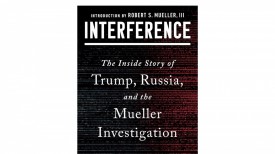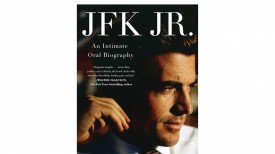By Lou Carlozo
CHICAGO (Reuters) - Come summer, mutant robots from outer space and flying, caped crusaders will need to make way for a slightly less dramatic comic book character: the number cruncher.
On June 4, SmarterComics will release an 80-page comic-book version of "Financial Intelligence," a bestseller by co-authors Karen Berman and Joe Knight. The founders of the Business Literacy Institute, which provides financial literacy training, had produced a surprise hit with their traditional-text tome, released in 2006, which offers simple explanations of accounting concepts for managers.
Enter the illustrated version, among the first to impart financial wisdom via the comic-book medium. In it, the authors help a fictitious motorcycle-shop owner to decipher income statements and balance sheets, and to differentiate between cash and profit. It's set to sell in three versions: paperback ($14.95), iPadapp ($6.99) and iPhone app ($4.99).
Mixing business with cartoons may not seem intuitive, but the popularity of some animated web-video shorts about financial topics may be encouraging for the authors. More than 5 million people have watched quantitative easing, explained by cartoon animals, at: (https://www.dvorak.org/blog/2010/11/13/qe2-explained-by-cartoon-characters/)
CARTOONS MAKE LEARNING FUN novel
Graphic novels about business, too, have been trendy in recent years. "Atlas Black: Managing to Succeed," a graphic novel-textbook for Texas Tech University management students, caught on in popularity nationwide, and inspired a sequel. Then, there's Patrick Lencioni, who adapted his massive bestseller, "The Five Dysfunctions of a Team: An Illustrated Leadership Fable," into a 250-page manga comic, published by Wiley in 2008.
One economic expert thinks the comic book version of "Financial Intelligence" could work -- in part because he's tried the illustrated approach himself.
"The cartoon format is really fun, but it's not a magic bullet," says Yoram Bauman, a self-styled "stand-up economist" who wrote "The Cartoon Introduction to Economics" (Macmillan), and part two of the same book, which covers macroeconomics. "You have to tell a good story, and the fun effort takes time and effort and thought."
Bauman, who has a Ph.D. from the University of Washington, was aware of no other cartoon books tackling financial concepts, apart from those of the Federal Reserve in 2009.
"It's a series about the money supply, interest rates and what role the Fed plays," he says, adding that teachers can get the books for free.
he man behind the illustrated "Financial Intelligence" is SmarterComics CEO and founder Franco Arda -- a former head of derivative sales at Deutsche Bank's Asia division, who decided to take a new career path. He started out with a business comic written to inspire his daughter, titled "Fortune Favors the Bold."
The Swiss-born Arda, produced the illustrated "Financial Intelligence" without corporate backing or outside sponsorship, relying, instead, on word of mouth as his favored marketing tool.
"With thousands of accounting, business and MBA students, entrepreneurs and managers, the market's need for a fast, fun and informative comic book on accounting is big. Very big," he says.
TARGET AUDIENCE IS YOUNG ADULTS
Arda says he picked "Financial Intelligence" for comic book treatment because "you read this book and you understand where the numbers are coming from and what they mean. I'm a former MBA student, and yet I'm a poor soul who has trouble with numbers."
Arda is not alone.
In an October 2009 article for the Harvard Business Review (https://hbr.org/2009/10/are-your-people-financially-literate/ar/1),
Berman and Knight reported that a representative sample of U.S. managers scored an average of only 38 percent on a basic financial-literacy exam. Many didn't know profit from cash, and seven in 10 could not define "free cash flow," the cash that can be used to pay customers their dividends.
While the target audience for the comic book will be young adults, Arda also hopes for broader appeal with, for example, time-strapped readers looking to sharpen their monetary chops on a business flight.
"People today prefer information in bite sizes, Twitter sizes," Arda says. "It's micro style -- grabbing attention for the moment."
(Editing by Bernadette Baum, Beth Gladstone and Andrea Evans)
© 2023 Books & Review All rights reserved.
Popular Now
1
Books to Read After 'Fourth Wing': Top Picks for Fantasy and Romantasy Fans

2
‘The Secret Public’ by Jon Savage Book Review: An Insightful Look Into the LGBTQ Influence

3
Stephanie Regalado's 'If They Only Knew' Column Is Now A Book, Unleashing 60 Anonymous True Stories to Empower Women

4
'No Wire Hangers' Scene That Almost Did Not Happen: New Book Reveals Faye Dunaway's Struggles

5
Rare First Edition of Aphra Behn's Novel 'Oroonoko' Discovered in Kent: A Historic Literary Find

Latest Stories
Book Reviews
‘The Secret Public’ by Jon Savage Book Review: An Insightful Look Into the LGBTQ Influence

Book News
Stephanie Regalado's 'If They Only Knew' Column Is Now A Book, Unleashing 60 Anonymous True Stories to Empower Women

Book News
'No Wire Hangers' Scene That Almost Did Not Happen: New Book Reveals Faye Dunaway's Struggles

Book Reviews
‘The Perfect Couple’ by Elin Hilderbrand Book Review: A Captivating Summer Mystery

Book News
New Book ‘The Franchise’ Reveals Penguins President Kyle Dubas’ ‘Biggest Mistake’ as Maple Leafs GM











